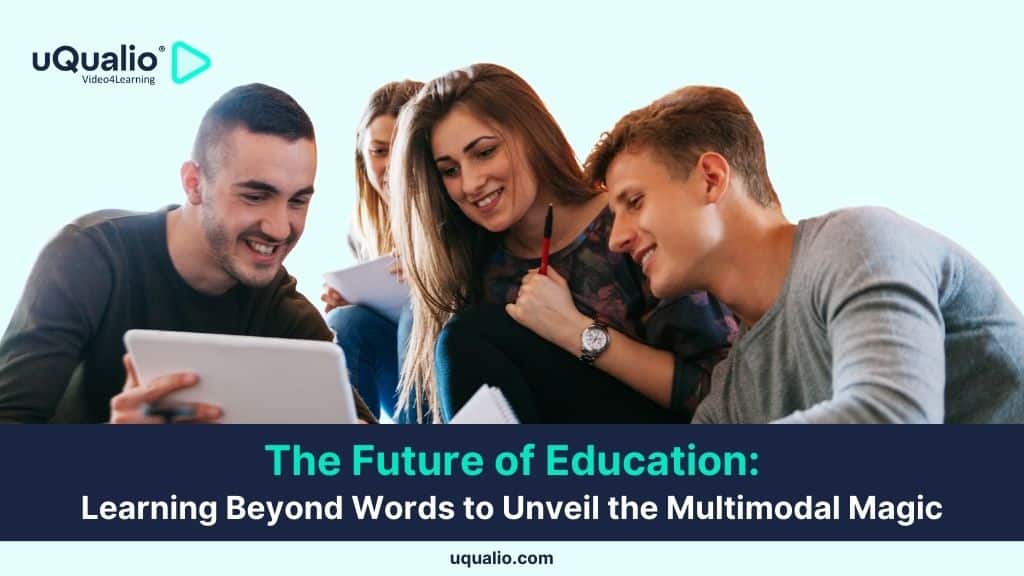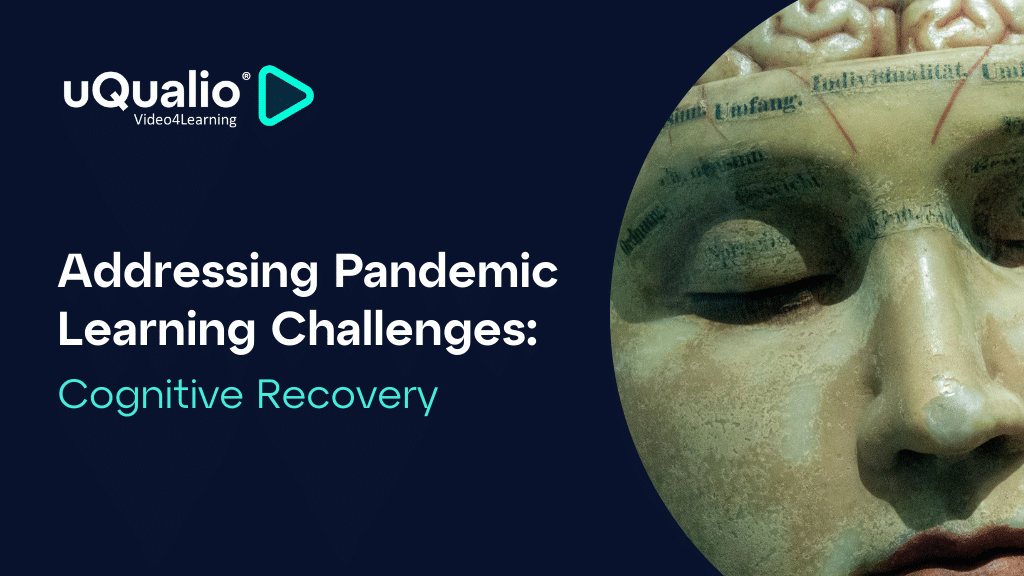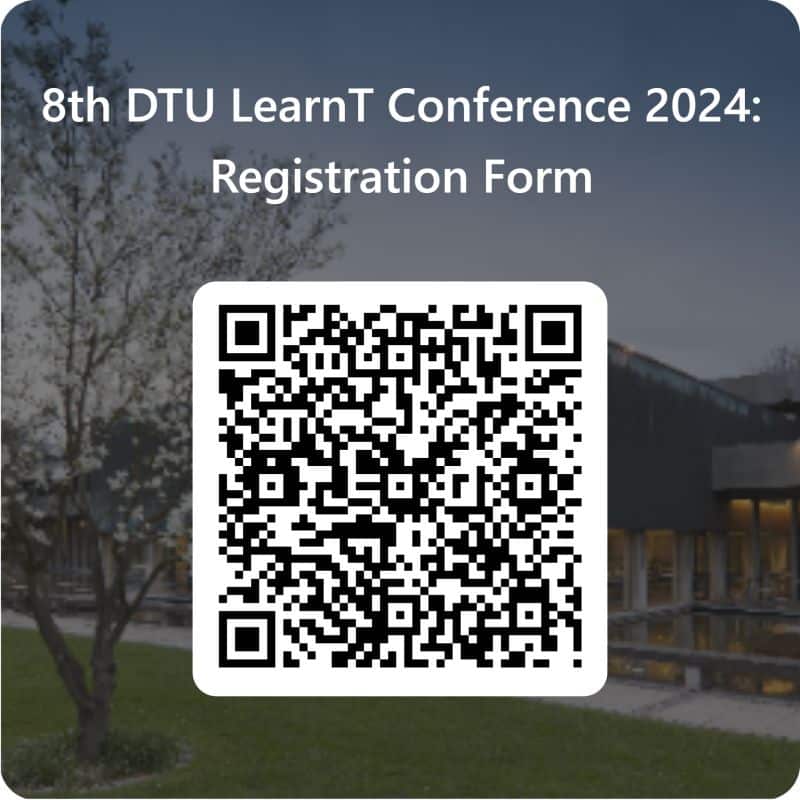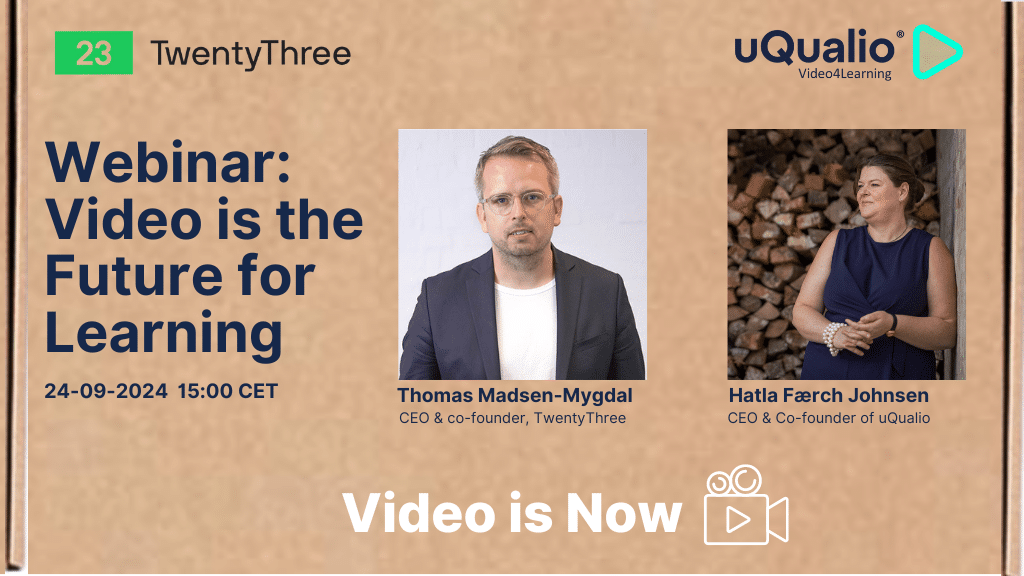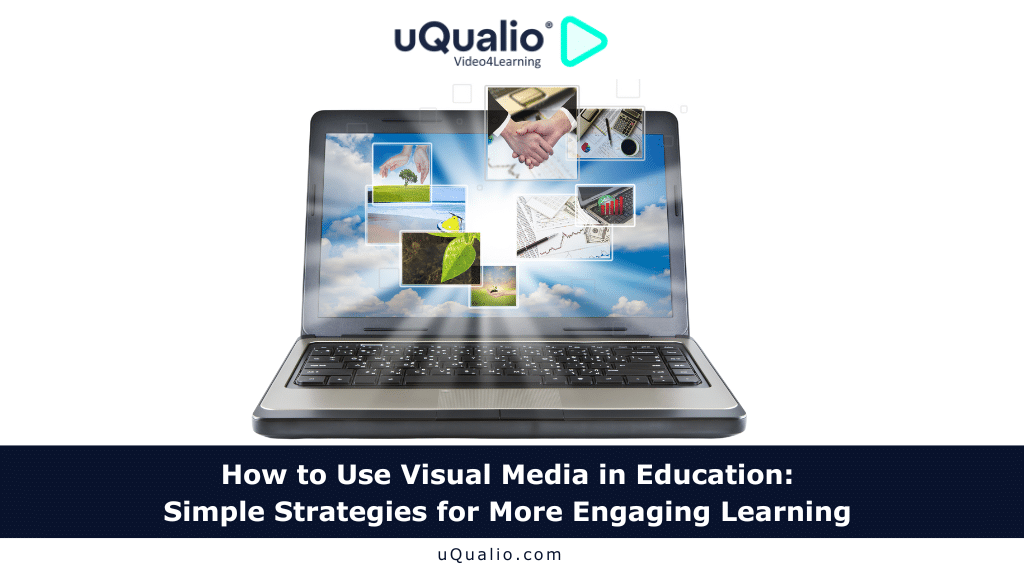The human brain is designed to process visual input in a very different way, compared to how it processes audio or text-based input. Recent advances in medical sciences, particularly functional Magnetic Resonance Imaging (fMRI), have confirmed a dual coding system through which text/auditory input and visual input are processed in separate channels. This presents the potential for simultaneous augmentation of learning. It also supports the hypothesis that learners who use well-designed combinations of visuals and text learn more than those who only use text – multimodal learning.
What Is Multimodal Learning?
Multimodal learning refers to the use of multiple sensory channels to deliver information and facilitate learning. This can include a combination of visual (images, videos), auditory (lectures and music), kinesthetic (hands-on activities), and other modalities to meet different learning styles and preferences. By engaging multiple senses, multimodal learning can enhance understanding, retention, and engagement.
Multimedia Design: Combining Visual and Verbal Learning
Recent neuroscience advances are helping to assess previous theories in cognitive overload, dual coding, and multimedia learning.
This field is still evolving, but research has shown that learning can be enhanced through the informed use of visual and verbal modes of learning.
While the bulk of the research studies have been short-term, they definitely have shown the correctness of these principles. Having said that, when applied in classroom settings, more recent research on these principles has resulted in mixed yet mostly positive results.
According to experts, such mixed results might be because of the lack of specificity with respect to the type of multimedia intervention. For example, there was no detailed information on the specific blends of modalities, formats within modalities, scaffolding of learners, learner attributes, learner age, subject complexity, and type of learning goals addressed, etc.
Based on the works of prominent researchers like Richard Mayer and Roxanne Moreno, here is a set of principles specific to modality and multimedia:
#1 Multimedia Principle
Retention can be improved through the combination of words and pictures, compared to words alone.
#2 Spatial Contiguity Principle
People learn better when corresponding pictures and words are presented close to each other, compared to when both are presented far from each other on the screen or page.
#3 Temporal Contiguity Principle
Individuals learn better when corresponding pictures and words are presented together, compared to when both are presented successively.
#4 Coherence Principle
Learners learn better when unnecessary pictures, sounds, and words are excluded, compared to when they are included.
#5 Modality Principle
People learn better with narration and animation, compared to on-screen text and animation.
#6 Redundancy Principle
Individuals learn better when information representation is restricted to a single modality as redundancy may interfere with learning.
#7A Individual Differences Principle
Design effects are greater for low-knowledge learners vs. high-knowledge learners.
#7B Individual Differences Principle
Design effects are greater for high-spatial learners rather vs. low-spatial learners.
#8 Direct Manipulation Principle
As the complexity of learning materials enhances, the effect of the learning materials’ direct manipulation on transfer also enhances.
In the real world, educators have observed mixed, yet positive trends with multimedia design to strengthen learning. In general, people who learn using approaches that incorporate multimodal designs outperform those who learn using traditional approaches with a single mode.
Multimodal vs. Unimodal Learning
As part of our analysis, let’s shed light on the results of multiple studies, distinguishing impacts related to basic and higher-order skills.
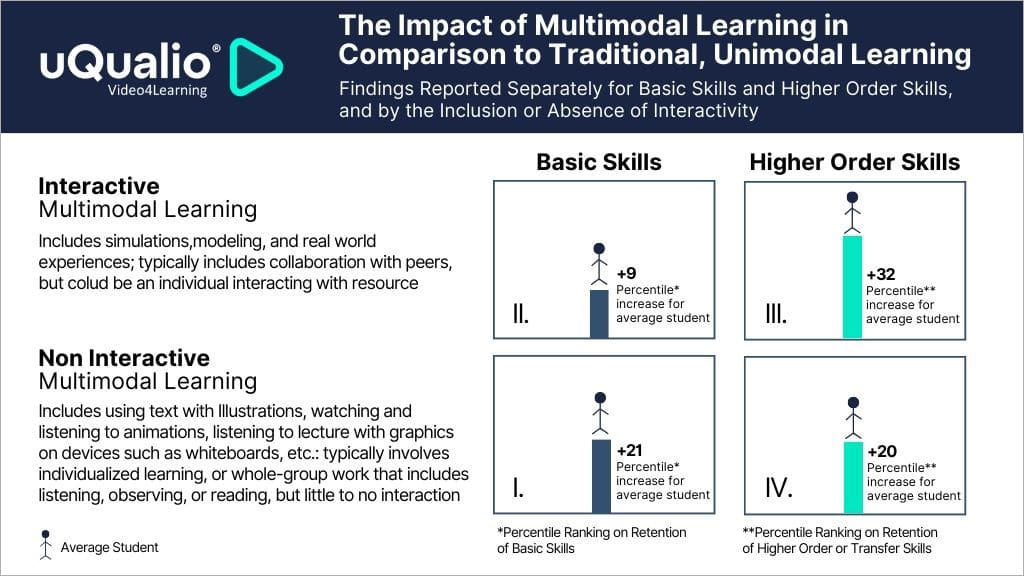
Referring to the image above, the findings are discussed below:
Quadrants I and II:
- The scores of an average student on basic skills assessments increase by 21 percentiles when engaged in non-interactive, multimodal learning (text with audio, text with visuals, watching and listening to lectures or animations that effectively use visuals, etc.) in comparison to traditional, single mode learning.
- Shifting the situation from non-interactive to interactive, multimedia learning (engagement in simulations, modeling, and real-world experiences), didn’t change the results drastically, with an average gain of 9 percentiles. These results are not quite significant statistically, but they are still positive.
Quadrants III and IV:
- When the average student is engaged in higher-order thinking, using multimedia in interactive situations, their percentage ranking on higher-order or transfer skills increases by 32 percentile points, compared to what the student would have achieved with the conventional approach.
- When the context shifts from interactive to non-interactive multimodal learning, the result is somewhat diminished, but is still significant at 20 percentile points over traditional means.
Final Thoughts
In general, multimodal learning tends to be more effective than traditional, unimodal learning. Adding visuals to verbal (text and/or auditory) learning may prove immensely beneficial in basic and higher-order learning.
The analysis above helps understand when interactivity enhances multimodal learning of moderately to complex topics. It also explains when it is advantageous for learners to work individually while learning basic skills.
To be true, the most effective learning designs include different levels of interactivity, a range of media, combinations of modalities, pedagogy, and learner attributes, based on a specific set of situations. So now you know that to remember and achieve more, multimodal learning is the key.
uQualio is an all-in-one video eLearning platform, which allows you to take advantage of the multimodal learning approach through interactive video training. Designed to train any audience, anywhere, anytime, uQualio is equipped with features like microlearning and gamification to make learning more engaging, fun, and rewarding.
Achieve Effective & Affordable Video Training
– uQualio is an award-winning, easy-to-use, all-in-one NextGen LMS software for any types of online video training.

